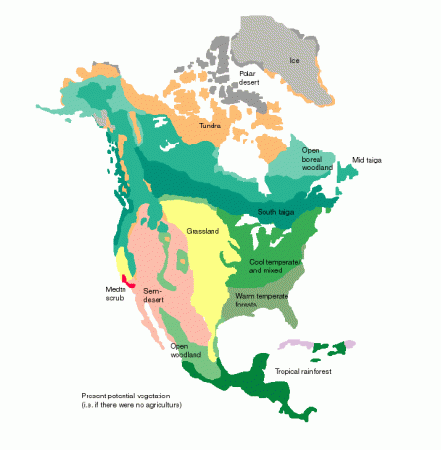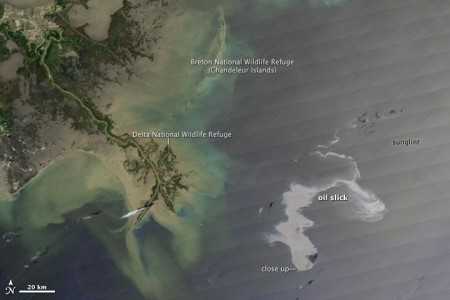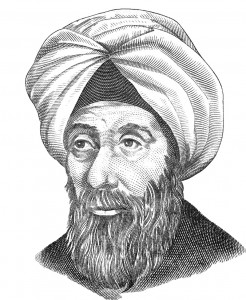An excellent Project Song article on NPR follows Moby and singer/songwriter Kelli Scarr as they write and record a song over the course of two days. The song itself, called Gone To Sleep, is quite good but the article, where they follow the artists in the process of creation is quite fascinating.
Best nature photos
The Guardian newspaper put together an excellent collection nature photographs for auction for an Earth Day charity. I particularly like the pictures from the Franklin River, south-west Tasmania, Australia and Stone Canyon, Arizona/Utah, U.S.A.. Apart from the wonderful composition and spectacular lighting, I like the effort and meaning behind these images.

According to the Guardian, the Franklin River image was instrumental in preventing the flooding of the river for an hydroelectric dam. The Stone Canyon picture was used to try to have the area declared a national monument. I particularly appreciate the effort of Jack Dykinga, who took the Stone Canyon photo. He hiked up the slot canyon at 3:30 am in order to get the photograph at dawn; with their softer light and reddish tints, sunrise and sunset are the best times for photography.
Clark Montessori almost got Obama
Clark Montessori, a public Junior/Senior High School in Cincinnati, will get a senior administration member, but not President Obama, to give their commencement address. They were one of three finalists for the Presidential visit. I offer them my congratulations on what their students achieved. Their petition was student initiated and organized, the very thing you hope and expect to see in a great school.
Clark’s website has a lot of the links and news articles about the competition, and it’s interesting to trace everything that happened on their Race to the Top Blog.
Cattle drives

The story of cattle drives and the railroads also has a lot to do with the geography of natural resources in the United States. A few good references:
- Western frontier life in America by Richard Strata from NCSU (see the section on ranching).
- Map of cattle drives (unclear source).
- The image above is from Oak Ridge’s website on vegetation change over the last 150,000 years.
Oil slick

The scale of the disaster caused by the oil leaking into the Gulf of Mexico from the damaged oil rig is increasing day by day. We are preparing to go on the end-of-year adventure trip soon, but I’m wondering if students might be interested in heading down to the Gulf coast to volunteer in the clean-up.

NASA’s Earth Observatory has some amazing imagery on its page on the oil leak. Many of the images also show the mouth of the Mississippi and its delta, which tie directly into our observations in the sandbox. The impact of the oil spill also brings up the topic of density differences in fluids, something we’ve seen in the making bread jars, but applied to a much larger scale.
Poetry in the morning (update 2)
Hope
Know no fear.Hope dares to blossom
Even inside the abysmal abyss.Hope secretly feeds
And strengthens
Promise.
– Sri Chinmoy
Poetry in the mornings right at the end of community meetings are going well. We’re into our third round and we’re beginning to get some original poetry. Some students are also asking to do more poetry in Language Arts. We’ve also discovered Short Poems.org but, although I have not set a minimum word limit, we’ve established a good precedent for how short a poem can be and the group is policing itself quite nicely.
Learning science

Science is, at its core, hypothesis testing. To learn science learn the scientific method: figure out the precise question to solve (as best you can); come up with an answer you think might work (hypothesis); test it; and repeat as necessary while modifying the hypothesis. Almost all science experiments for middle school through college involve following a set of instructions in the lab manual. Only in independent research projects do students actually go through the scientific process and then it’s difficult because they don’t have the experience.
Part of the problem is that it takes time. Time to muddle through the though process of trying to figure out what exactly is a tractable question to solve. Time to come up to with a reasonable, testable hypothesis. Time to figure out how to test it. Time for iterating through the process again, although, once you’ve set up your experiment the first time doing it again and again is not that hard or time-consuming.
With our Montessori Middle School’s six-week cycle of work, and even with the two weeks dedicated to the Natural World, students should be possible to get through this process for at least one problem. They would probably have to dedicate the two weeks to a single problem/experiment and it would probably be terribly slow in the beginning.
To discover the truth about nature, Ibn a-Haitham reasoned, one had to eliminate human opinion and allow the universe to speak for itself through physical experiments. “The seeker after truth is not one who studies the writings of the ancients and, following his natural disposition, puts his trust in them,” the first scientist wrote, “but rather the one who suspects his faith in them and questions what he gathers from them, the one who submits to argument and demonstration.” – Steffens (2008) (Ibn Al-Haytham: First Scientist)
From the author’s mouth: The heroic journey
Tammy Carter Bronson, author and illustrator of Tiny Snail, and Matthew Bronson, author of The Kaleidonotes, gave an excellent talk about publishing and the heroic journey to our middle and elementary classes. We use the heroic journey as a story arc a lot, but it was great for the students to hear published authors talking about how important it was to them.
The Bronsons have done over 500 talks to schools (but this was their first to in a Montessori program) so they have a well polished presentation. I particularly liked how they stressed the need for revision when writing. Tiny Snail took nine months to write, and 16 revisions before Ms. Bronson was happy enough with it to start illustrating. And it’s a kids picture book. They talked about peer reading and read-out-loud revision strategies. In our after-talk discussion, while we assembled a couple graphic organizers on the heroic journey and publishing, it was great to see the students recognize, however reluctantly, that there might actually have been a good reason for them practicing these techniques all year.
It was also very interesting to hear that the authors are delving into the growing opportunities of the web for building a following and publishing their work. You can find Ms. Bronson reading Tiny Snail and Pollywog on their YouTube channel. While it’s not up yet, I’m really looking forward to seeing the making of her new book, where she is video recording the entire process.
This was a great opportunity for our students, especially the prospective writers and directors, and I will try to plan something like this every couple years. I also feel a little guilty. The Bronsons emphasize how important it is to put your best work forward. Even though it’s easy to self-publish or publish online what you put up will shape your reputation. That’s why multiple revisions are important. Yet despite my best efforts, I don’t have the time to revise each blog post until I’m completely happy with it. Blogging is a different beast. So I beg the reader’s lenience (of course, since the average number of readers per blog is one, this may not even be a problem).

